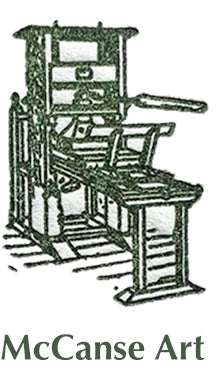Edwy Francis Cooke
Edwy Francis Cooke was born in Toronto in 1926. He studied at the Ontario College of Art (now OCAD) under Charles Comfort, Yvonne McKague Housser, John Alfsen, Eric Aldwinke, and Grace Coombs. Cooke befriended many noted Canadian and international artists, including Harold Town, Carl Schaefer, Ron Bloore, Charles McFadden, and Nick Keleman. Cooke also studied art and architecture at the University of Toronto, where he joined the Hart House Sketch Club and studied under Caven Atkins.

In 1947, Cooke’s friend and colleague, Ron Bloore, traveled to New York and began sending Cooke 3” x 4” photographs of New York to paint from. The following year, Cooke joined Bloore in New York. While there, Cooke saw the late paintings of Kandinsky and Rudolph Bower, which would come to influence Cooke’s later work. At this time, Cooke also met Rolph Scarlett. Later that year Cooke returned to Toronto and saw an exhibition of American paintings commissioned by Standard Oil. The work of artists he saw at this exhibition, such as Charles Burchfield, would also influence Cooke’s work; Burchfield’s Black Iron (1935) compares to Cooke’s Abandoned Kiln.

In 1949, Cooke won a graduate scholarship to attend the University of Iowa; Cooke was friends with Roloff Beny, who had won the same scholarship earlier. At the university, Cooke studied under international artists Mauricio Lasansky, Jim Lechay, and Gene Ludins. Cooke also became interested in the work of Paul Nash, whose work was purchased by the Art Gallery of Toronto and the National Gallery of Canada.
Cooke returned to Toronto in 1951 and began teaching at Central Tech, also giving classes to children at the Art Gallery of Toronto and the University of Toronto. Cooke also taught the Artist’s Workshop with William Winter, Jock MacDonald, and Barbara Wells. Cooke became the curator of Hart House’s “Lee Collection” in 1953. Cooke helped the Hart House Art Committee purchase Lawren Harris’ Isolation Peak in 1946.
In the mid 1950s, Cooke moved to the London-Windsor area of Ontario. In 1958, he was awarded a Canada Council grant to travel Europe, including England, France, and Italy. Upon his return to Canada in 1959, Cooke took a hiatus from painting and moved to New Brunswick, where he served as Curator of the Beaverbrook Art Gallery until 1964 and also taught at the University of New Brunswick. In 1964, Cooke moved to Montreal and taught at Sir George Williams University. Cooke resumed painting in 1974 after a trip to England and multiple trips to the New England states. He worked from photos he took in Maine; Edward Hopper, George Bellows, and John Marin also painted in that area.
Cooke exhibited a number of his early abstract works (dating from 1947-1950) at the Canadian Group of Painters exhibitions, and also at the Exhibition of Contemporary Canadian Artists at the Art Gallery of Toronto. Additionally, he exhibited at the Elsie William Perrins Memorial Art Gallery in London and the Willistead Art Gallery in Windsor. Cooke exhibited at the Royal Canadian Academy from 1944-46 and the Montreal Museum of Fine Arts from 1948-52. He also had solo shows at Hart House, University of Toronto (1947, 1952) London Art Museum (1955), William Lawrence Art Museum in Williamstown, Massachusetts, and the University of New Brunswick (1962). Cooke died in Montreal in 2000.
Cooke exhibited with the Royal Canadian Academy of Artists from 1944 through 1958. He also exhibited with the National Gallery of Canada, Hart House, London Museum and Art Gallery (Ontario), the University of New Brunswick, among other organizations. Cooke’s work is held within the collections of the Art Gallery of Ontario, the Beaverbrook Art Gallery, Concordia University, and Loyola College in Montreal.
Written by Mina Ivosev.
Sources:
“Edwy Francis Cooke (1926-2000).” Artprice.Com, Art Price.
Colin S. MacDonald. A Dictionary of Canadian Artists. Vol. I, A-F, 5th ed., Canadian Paperbacks Publishing, 1997, pp. 523a-524a.
